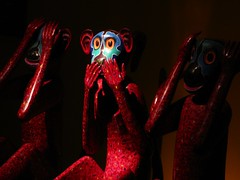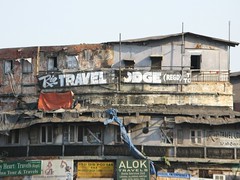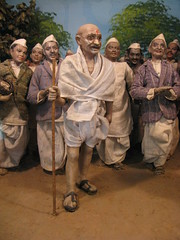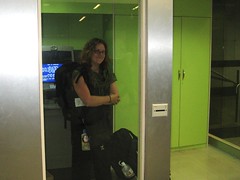Delhi-Dally: The relief of being in India, the pain in Delhi
We thought we’d be in Delhi for just two days, but it has taken us four to leave. At first, we are so happy to be back in India we don’t mind the hassles of the capital, but, by the time Lauren spends three hours stuck in a glass booth, we are desperate to move on.
Our plane touches down at the ungodly hour of 3:00 am, and we are in India. This isn’t our first time in here, and it won’t be our last. We bought ten-year visas, confident that our enchantment with the sub-continent will draw us back again and again.
We always tell friends that it’s the people that make us love India so much. For every scammer and tout you encounter trying to get your money, there will be three strangers watching out for you, making sure you’re safe, sharing their food on delayed trains, or just wanting to know more about life in the U.S.
In Delhi though, the balance is askew and the rip-off artists have the upper hand.
Lauren and I have planned ahead, booking our room in advance and arranging a ride from the airport to Paharganj, Delhi’s “main bazaar” neighborhood – the center of the chaos – where all the affordable hotels are. Our driver swerves around a small herd of cows then walks us down an alleyway of ramshackle buildings and public urinals to Lonely Planet recommended Hotel Namaskar. He laughs at our 50 rupee tip; we’re Americans, he expects more. We know it’s more than enough.
Junk is piled on the sides of the hallway as we walk to our hotel room – this is unwelcome but not so unusual. Lauren enters the room first, anxious to flop down and go back to sleep, but she sees that the room already occupied.
As the lights go on, roaches scatter off the bed. “No,” Lauren says with the firmness and indignation of a native New Yorker who dealt with too many roaches in her old Lower East Side apartment, “I don’t think so.” Generously, the night man at Namaskar walks us a few doors down the side street to R.S. International Hotel, whispering “Please sir, do not tell my boss.” The rates are three times as high, but at least the rooms are clean-ish. At least now, at 5 a.m. we can get to sleep.
Later that day, we make our way to the tourist office at the New Delhi train station. Through a sea of hollering rickshaw-wallahs, over many sleeping bodies, and up a flight of steps whose walls are stained red with betel-nut spit, the tourist booking office is an oasis of bureaucratic calm. We book our most important train first – the last one, the one that gets us back in time for our departing flight – but are stymied when we attempt to buy the first ticket. There’s no train to Bikaner – the first stop on our perfect route through Rajasthan – for two days.
In order to get out of Delhi sooner rather than later, we’ll need to go by bus, but getting bus tickets proves tougher than we think. Our Lonely Planet guidebook gives us no useful information so we’ll need to try our luck with a travel agent. Actually, it’s difficult to be a foreigner in Delhi and not visit a travel agent.
“Hello, where are you from?” says the friendly boy on the street, “Oh, yes, my cousin lives in California. How long have you been in Delhi? You are going to Rajasthan?” This boy is charming, a master of the soft sell. “Make sure to go to the government tourist office. I am going near there to meet my girlfriend, I can show you.”
Sure enough, the sign above the door says “Government of India.” Over cups of hot chai, when we ask about buses to Bikaner, the man behind the desk tells us, “The trains, they are dangerous. The roads, they are not good. The buses, they are full. If you take a car, is being the same price and you can stop anywhere.”
This is a spiel we will hear often. Even when we eventually find the real government office, the agent readily admits he gets commissions and sends us around the corner to yet another private travel agency where, once again, a man tries to get us to blow our budget on a car and driver.
We finally track down an bus company “office,” which is a small open-air counter next to a porn theater. They’ll sell us a bus ticket for the eight hour ride to Bikaner, but the deal doesn’t feel right. Here’s where one of our local heroes comes through. We ask a stranger what he thinks. He calls up his father, who makes this trip often. His dad reveals that the ride to Bikaner actually takes 14 hours and the road is very bumpy. The train is by far the best option.
Fine. We’ll spend one more day in Delhi. We visit some sights we missed on our last trip to Delhi. We catch up on email. Finally, as we’re putting on our backpacks to head to the train station, we realize that we’ve gotten the time of the Bikaner train confused with another train ticket we bought. Our train left the station on time (a rarity in India) without us, two hours ago.
Fine. We’ll stay one more night in Delhi, reroute, skipping Bikaner and heading to Jaipur on the first train. These things happen. Early in the morning, we lug our packs to the train station only to find out that the frequent Jaipur-bound trains are full until 5 p.m.
Fine! We’ll spend another the day in Delhi, chilling out in a cafe and running a couple of errands. But first, we need cash, so we stop at an ATM in the Metro station. Lauren puts her bank card in the slot and suddenly we’re gasping in horror as the ATM screen changes to read “Windows is shutting down,” then turns to the blue screen of death, then finally turns black. The card does not come out.
Not fine.
That ATM card is one of our few means of cash flow and we’re not about to let it go without a fight. Lauren settles in in front of the machine while I head for the office.
It’s at least 90 degrees out and the usual thick, polluted smog has settled over Delhi as I half-jog through a back alley to the Oriental Bank of Commerce. The manager’s office is piled high with computer print outs and ten-year old PCs. Rupinder is sympathetic, but will not bend any of the bank’s policies without a go-ahead from his bosses in Bangalore, who will only follow Visa’s policies to the letter. Rupinder can retrieve our ATM card that day, but has to destroy it. “Please, though,” Rupinder pleads, “tell you wife to leave the ATM booth.” He doesn’t know Lauren. She’s not going anywhere.
For three hours she waits in the glass booth with our backpacks like a display in the Museum of Frustrated Tourists. Meanwhile, I am running around, going through the process of buying an Indian SIM card and charging up my cell phone so we can call our credit card company for help.
A bank technician finally arrives to free our bank card (with over a half dozen others that have been trapped that day) and we accompany him back to Rupinder’s office.
Eventually, we reach the night shift folks at Charles Schwab and Visa, who can do nothing for us since it’s just past midnight in the U.S. They promise to do what they can once their offices open, by which time we’ll be halfway to Jaipur. One of the few methods we have to access our money will wait for three weeks in a desk drawer in Delhi while we travel through Rajasthan.
But, at least – and at last – we get to leave Delhi.
Travel Photos from Delhi, India
If you can’t see the photo slide show above, view the photo set on Flickr.






Lord, that brings back some memories! I think the only time I have cried while trying (trying is the operative word here) to buy train tickets is when I was in India. Hope things went more smoothly after you left Delhi!
I see we’re not the only ones getting our departure times confused, now are we?